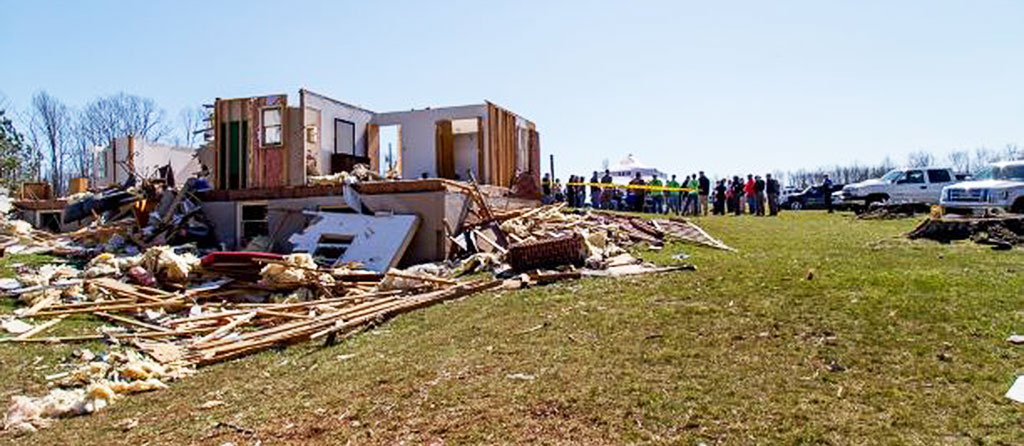Description
Damaging winds typically are associated with tornadoes or landfalling hurricanes. Isolated “downburst” or “straight-line” winds associated with any common thunderstorm can also cause extensive property damage. Tornadoes are classified as a rotating column of wind that extends between a thunderstorm cloud and the earth’s surface. Tornadoes are classified by their wind speed which can range between 100 and 250 miles per hour. Tornadoes typically measure less than 200 feet wide, but in rare circumstances tornadoes can be over a mile wide. and have wind speeds between 65 and 250 miles per hour. The rotating column of air often resembles a funnel-shaped cloud.
Location and Extent
The United States averages 1,200 tornadoes per year, and 80% of those are either an F0/EF0 or F1/EF1. In 2017, 25 tornadoes struck Virginia and caused $10M in damages but no deaths or injuries. In Virginia most tornadoes are Low-intensity and tornadoes rated F2 or higher are rare. While tornadoes are most common in the central part of the US, Virginia has averaged 17.7 tornadoes per year during the 24 years between 1991 to 2015, and increased to 24 tornadoes per year are reported over the last decade. The total number may be higher as incidents may occur over areas with sparse populations, or may not cause any property damage.
VDEM documents statewide annual tornado hazard frequency in the Commonwealth of Virginia Hazard Mitigation Plan. Annual tornado hazard frequency is an estimate of the frequency with which a point will experience a tornado. It is interpolated from neighboring tornado impact areas over a historical period.
The CVPDC area is located in an area of low to medium risk for tornado strikes of magnitude F2 or larger. Please note that this map is Virginia-specific and “high frequency” in the Commonwealth is still relatively low frequency compared to the Midwest and Southern United States.
History
Over the last decade, tornadoes have primarily occurred May through September in Virginia, with peak activity in July. However, a tornado can occur at any time throughout the year. Hot and humid conditions stimulate the tornado's growth. Strong tornadoes may be produced by thunderstorms and often associated with the passage of hurricanes.
The NCEI Storm Event Database records tornado occurrences when the storm has sufficient intensity to cause loss of life, injuries, significant property damage, and/or disruption to commerce. According to the database, 29 tornado events occurred between 1950 and 2019 in CVPDC, including two severe tornado touchdowns rated EF3. Both touchdowns occured after the last hazard mitigation plan update in 2012. On February 24, 2016, an EF3 tornado spanning a 16 mile stretch caused damages in Campbell and Appomattox Counties. The tornado caused seven reported injuries and one fatality. On April 15, 2018, an EF3 tornado hit the community of Elon northwest of Lynchburg. It caused 12 injuries and damaged or destroyed dozens of homes. This is the first tornado within Lynchburg city limits, and the first EF3 in Amherst County.
Plan Chapter
CVPDC HMP 2020





